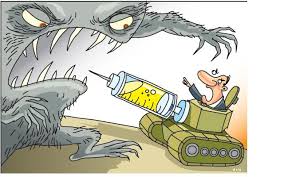A massive global increase in factory-farmed meat production by 2030 will increase antibiotic use by 67 percent, posing a “public health threat,” predicts a newly released study published in the Proceedings of the National Academy of Scientists (PNAS). Rampant antibiotic use in factory farms, required by global meat corporations, is already resulting in an antibiotic-resistance crisis in the U.S. (over two million illnesses and 23,000 deaths a year due to resistant bacteria) and in the European Union (25,000 deaths annually). For the first time, scientists have mapped out the rise of antibiotic-resistant bacteria due to global antibiotic use in the feed of animals packed tightly in confined conditions.
Antibiotic use is projected to double in Brazil, Russia, India, China and South Africa (BRICS countries) given their shift towards “vertically integrated intensive livestock production systems” to meet rising demand for animal protein. Two-thirds of the global increase in antibiotics is predicted to come from a net increase in the number of animals used in factory farms and the remaining third will come from a shift in agricultural practices leading to new factory farms.
According to the study, 46 percent of Asia’s shift will come from switching traditional animal agricultural practices to factory farming. By 2030, antibiotic use in Asia will be close to 52,000 tons, roughly representing 82 percent of the total global use of antibiotics in meat production in 2010. China, US, Brazil, Germany and India ranked as the top five users of antibiotics in 2010.
IATP’s research on industrial livestock production in China found that:
In 2008, China already produced 210 million kg of antibiotics, nearly half of which was put to use in the livestock sector. In contrast, in the U.S., the amount of antibiotics used for livestock was more than 29 million pounds (13.2 million kgs), which is 80 percent of total antibiotics sold in the country.1

